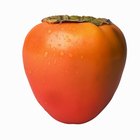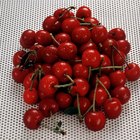
Stockbyte/Getty Images
Preparing food that’s delicious and healthful is as simple as keeping a well-stocked kitchen. From pantry staples to surprisingly healthy foods, here are the keys to making meals at home that taste incredible and are good for you.
With a well-stocked pantry and refrigerator and a little bit of know-how, making nutritious meals at home can be as simple as it is rewarding.
Buy the Right Quick-Meal Ingredients
Crushed tomatoes and marinara, says EA Stewart, M.B.A., R.D., are an easy way to add flavor to a meal. Marinara (look for brands made without added sugar) can be tossed over whole-wheat pasta and crushed tomatoes are great stirred into soups for a dose of lycopene, which may ward off cancer. To avoid BPA, look for tomatoes in glass jars or coated cardboard boxes.
Quick-cooking whole grains, like quinoa, bulgur wheat and polenta are nutritional powerhouses that are ideal for weeknights. Cook grains in organic chicken stock, and stir in minced green onions and a drizzle of lemon juice for an easy and delicious side dish. “If you don't like the whole grain taste or texture right away, just mix a little with regular grain such as rice or pasta,” recommends Laura May-Roelse, a Dallas-based registered, licensed dietitian and private-practice nutrition consultant. For quick and healthy protein, says May-Roesle, beans and lentils are must-haves to keep on hand. Instead of buying canned beans, cook a big pot of dry beans on Sunday afternoon. Throughout the week, toss beans with olive oil and balsamic vinegar and serve over mixed greens, stir into soup, or puree with a bit of chicken stock and olive oil and serve under chicken or fish.
“We eat eggs for breakfast, lunch and dinner,” says Stewart. The possibilities with a carton of eggs are manifold, from poached and served over lentils to frittatas. Filled with vegetables and baked with little or no oil, frittatas are an easy supper and a great way to clean out the fridge. “Plus, the leftovers are ideal for breakfast or a quick snack the next day,” Stewart adds.
Adding vegetables to every meal can sometimes be a challenge. May-Roesle recommends pre-chopping veggies when you bring them home so they require little to no prep time when you’re cooking. “And don’t forget about frozen vegetables,” she says. “They are frozen just after harvest, so they’re very fresh.”
Stock up on Easy-to-Grab Snacks
For guilt-free snacking, popcorn kernels (look for organic if you prefer to avoid GMOs) are a quick and easy way to satisfy a craving for something salty, Stewart says. Place 1/4 cup of kernels in a small brown paper bag and fold bag twice, creasing to seal. Microwave on high for 2 or 3 minutes, or until there are 5 second between pops. Drizzle with a touch of olive oil and sprinkle with salt. Get creative by sprinkling with dried herbs, grated parmesan cheese or Cajun seasoning.
Whole-wheat tortillas can be an invaluable item in your refrigerator for snacking. Cut into wedges, brush with vegetable oil, sprinkle with cinnamon and a bit of sugar — or salt and smoked paprika — and bake until crisp. Or, spread with a thin layer of peanut butter or low-fat cream cheese, top with sliced fruit and roll for an easy-to-eat bite.
“Greek yogurt, which is high in protein and filled with probiotics, makes for an easy, nutritious snack,” says Stewart. Stir in no-sugar-added, natural applesauce or a drizzle of honey to sweeten it up.
Fill a large, resealable container with sliced cucumbers, celery sticks, carrots, sliced red peppers and raw or lightly steamed broccoli spears. Keep in the refrigerator next to a small container of low-fat cottage cheese blended with curry powder, a bit of salt and dried herbs. Dip the crudités in the cottage cheese, refilling the containers throughout the week.
Buy Healthy Add-ins.
If you like to make breakfast smoothies, Stewart recommends tossing in a few handfuls of mild greens, such as spinach or kale, for a big dose of phytonutrients. Flax seeds, ground into meal, add fiber and heart-healthy omega-3s. Stir into your morning cereal or oatmeal, toss into smoothies or even in pancake batter. Heart-healthy nuts are a great way to dress up simple dishes, says May-Roelse. Rich in vitamin E, cholesterol-lowering plant sterols, fiber and omega-3s, nuts are nutrition packed and delicious as salad toppers, stirred into brown rice or blended into nut butter for sandwiches.
Be Aware of Hidden Calories
“Always use heart-healthy oils, such as extra-virgin olive oil, virgin coconut oil and high oleic sunflower oil,” says EA Stewart, R.D. Stewart also recommends flavorful oils like toasted sesame oil and walnut oil for drizzling onto finished dishes. Pots, pans and other tools can be just as important as the ingredients. A food processor allows you to make healthy dips and purees, and a good blender is essential for fruit-packed smoothies. A nonstick pan or well-seasoned cast-iron skillet allows searing and sautéing with little to no oil.
With a well-stocked pantry and refrigerator and a little bit of know-how, making nutritious meals at home can be as simple as it is rewarding.
Sip Into Something Cool
Plain water be darned! Avoid excess sugar and stay hydrated by sipping these healthy drinks.
Sparkling water “Add a splash of 100-percent fruit juice, and it’s like a natural soda,” says EA Stewart, M.B.A., R.D. Stick to seltzer and naturally sparkling water, as club soda can contain sodium.
Herbal Tea Make a pitcher of herbal tea and keep refrigerated for a flavorful, refreshing beverage. Use tea bags, or steep your own with fresh mint, lemongrass stalks, sliced citrus fruit and even dried (organic) rose petals.
Flavored Water Place sliced fruit or herbs in a pitcher of ice water to give it a subtle flavor, encouraging you to drink more. For a spa-like sip, combine sliced limes; peeled, sliced cucumbers, and a few sprigs of mint. For a fruity treat, try fresh raspberries and sliced strawberries. For a tart tonic, squeeze the juice of one lemon and one lime in the water, then add fresh orange slices.
Green Juice A daily glass of green juice can provide you with a big dose of vitamins and minerals. Try mild greens, such as spinach or kale. Add cucumbers and a half of an apple or some watermelon for sweetness.
Related Articles
6 Healthy School Lunch Ideas

How to Make Salted Mixed Nuts

A Brunch Menu for a Kid's Birthday Party

Ideas for Smoked Gouda

How to Store and Freeze Sundried ...
Easy Office Lunch Party Food Ideas

How to Eat Prunes
Menu Ideas Using Crepes

How to Make Strawberry Slushies
How to Make Homemade Tortilla Chips

What Can You Do With Fresh Persimmons?

How to Make Mango Preserves

What Drinks Can I Make With Banana Rum?

What Easy Desserts Can You Make Out of ...

How to Make Easy Homemade Hot Cocoa Mix ...

Baking With Canned Frosting

Ideas for a Sunshine Basket

How to Make Healthy Smoothies With a ...

What Can I Do With Frozen Cherries That ...

What Kind of Lunch is Best for a Lunch ...
Resources
Writer Bio
Katie Farmand is a writer, food stylist and recipe developer based in Orlando. She is the coauthor of the forthcoming farm-to-table cookbook, "Florida Field to Feast: Year-Round Recipes Celebrating Farmers, Chefs & Artisans" (University Press of Florida). She maintains her own blog providing original recipes and holds a Master of Arts in mass communication from the University of Florida, Gainesville.
Photo Credits
Stockbyte/Getty Images